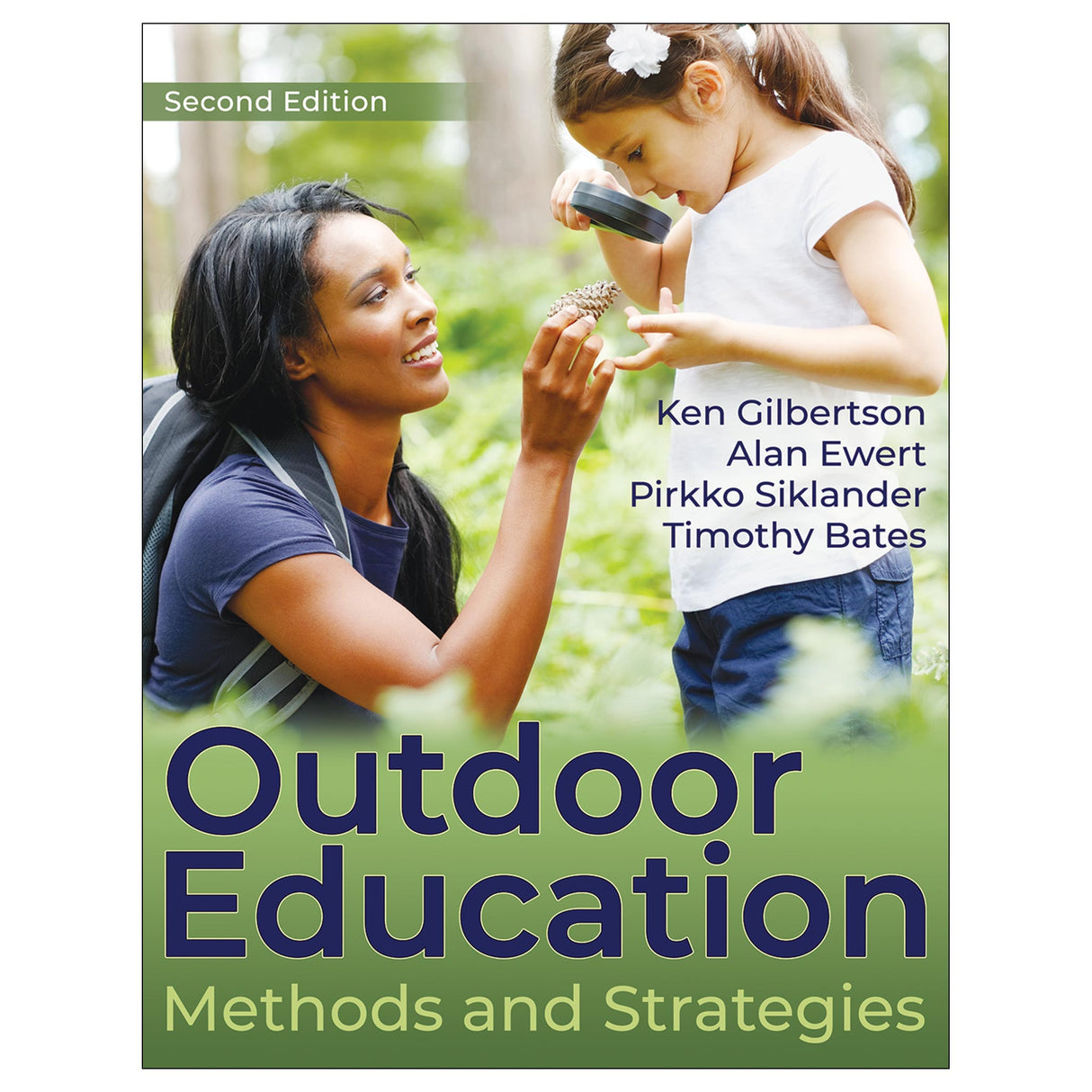Outdoor Education 2nd Edition epub
Methods and Strategies
$114.95 CAD
Access Duration: 10 Years
Outdoor Education: Methods and Strategies, Second Edition, is divided into three parts. Part I defines what outdoor education is and details the professional expectations for an outdoor educator. It also explores theories that support outdoor education, including developmental stages, learning stages, and constructivism. Part II guides the reader to understand the backgrounds and abilities of participants, create a successful learning environment, teach effectively in a variety of settings, and design lesson plans. Part III examines the uses of physical, cognitive, and affective methods for teaching, and it includes sample lesson plans that illustrate the methods presented. These chapters help students reflect on, evaluate, and improve their lesson plans through experimentation.
Presented by authors with a combined 150 years of experience in the field, the methods and strategies in this book have been tested and proven to work in a variety of outdoor settings. This second edition covers theories such as scaffolding, brain-based learning, Erik Erikson’s eight stages of development as applied to outdoor education, playful learning, and nature play as well as the use of technology in outdoor education. This text supplements theory with tools to support practical application:
- Easy-to-use forms for designing, implementing, and evaluating outdoor lesson plans
- Nine sample lesson plans offering detailed instructions and representing a variety of settings for different age groups and abilities
- Updated Stories From Real Life case studies that illustrate how methods are applied in the real world
- Explore Your World sidebars prompting students to reflect on their own experiences and goals
- Tips and Techniques sidebars offering brief and actionable advice for educators
- New Professional’s Perspective sidebars featuring insights from real practitioners about core content and topics in the book
Outdoor Education: Methods and Strategies, Second Edition, will help aspiring educators enhance their audience’s awareness, appreciation, and knowledge of the outdoors. Ultimately, it will advance their ability to increase people’s enjoyment and understanding of the environment.
Audience
Text for undergraduate- and graduate-level college courses in outdoor education, environmental education, adventure education, recreation, and natural resources education; also a reference for professionals managing outdoor education and adventure programs, nature centers, park and rec departments, environmental learning centers, camps, or natural resource agencies.Chapter 1. Defining Outdoor Education
Why the Outdoors?
Model of Outdoor Education
Environmental Education
Interpretation
Adventure Education
Experiential Education
Education Structure
Development of Outdoor Education
Rationale for Teaching Outdoors
Summary
Chapter 2. Describing the Outdoor Educator
Professionalism
Professional Responsibilities
Summary
Chapter 3. Learning Theories in Outdoor Education
Theories in Outdoor Education
Learning Theory Guiding Outdoor Education
Experiential Education
Constructivism
Scaffolding
Brain-Based Learning
Environmental Learning
Multiple Intelligences
Playful Learning Theory
Summary
Part II. Preparation for Teaching Outdoors
Chapter 4. Understanding Participants
Audience Assessment
Stereotyping
Gender
Age and Cognitive Development
Medical Conditions
Experience
Group Familiarity
Abilities
Culture and Ethnicity
Strategies for Teaching Diverse Audiences
Summary
Chapter 5. Creating the Learning Environment
Foundations of the Learning Environment
Components of Successful Learning Environments
Summary
Chapter 6. Outdoor Education Settings
Site Selection
Learning Barriers
Equipment
Logistics
Record Keeping
Special Settings: Lessons in the Night
Summary
Chapter 7. Designing Lessons
Advantages of Lesson Plans
Format
Structure
Assessment
Summary
Part III. Methods and Delivery of Outdoor Education
Chapter 8. Physical Methods
Physical Skills Development
Physical Manipulation
Activities, Games, and Competitions
Theatrics
Initiatives and Ropes Courses
Summary
Chapter 9. Cognitive Methods
Lecture and Discussion
Inquiry
Videography
Service Learning
Supporting Materials
Peer Teaching
Summary
Chapter 10. Affective Methods
Guided Discovery
Visual Imagery
Storytelling
Scenarios and Case Studies
Summary
Chapter 11. Sample Lessons
Night Hike
Navigation
Maple Sugar Bush
Weather
Fishing Ethics
Basic Techniques for Sea Kayaking
Personal Growth
Lighting a Camp Stove
Nature Awareness
Summary
Chapter 12. Your Future in Outdoor Education
Issues and Trends Affecting Outdoor Education
Working With Mainstream Education
State Standards and High-Stakes Testing
Professional Certification
Education or Advocacy?
Emotional Needs of Participants
Strategic Planning for Professional Growth
Summary
Appendix A. Professional Organizations in the United States and Internationally
Appendix B. Sample Forms
Learning theories guiding outdoor education: Playful learning theory
Learning theories guiding outdoor education: Scaffolding
Older adults, playfulness, and outdoor education
Sample lesson: Maple sugar bush
All ancillaries are free to adopting instructors through HKPropel.
Instructor guide. Includes chapter objectives, chapter outlines, and answers to the review questions from the book. It also includes a list of resources and professional organizations, a sample syllabus, and various teaching tips, assignments, and class notes.
Test package. Contains 240 questions in true-false, short-answer, and multiple-choice formats. The files may be downloaded for integration with a learning management system or printed for use as paper-based tests.





